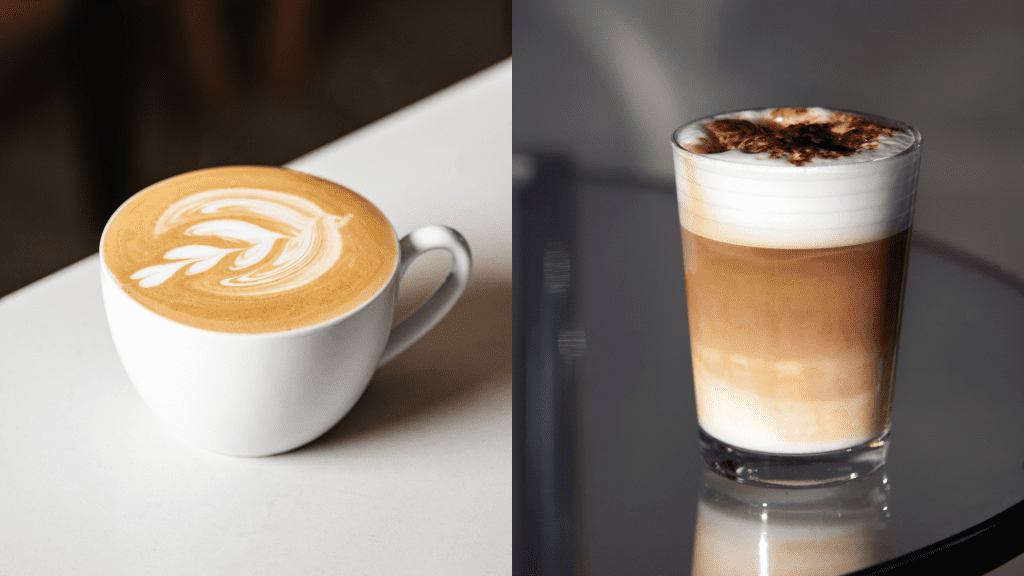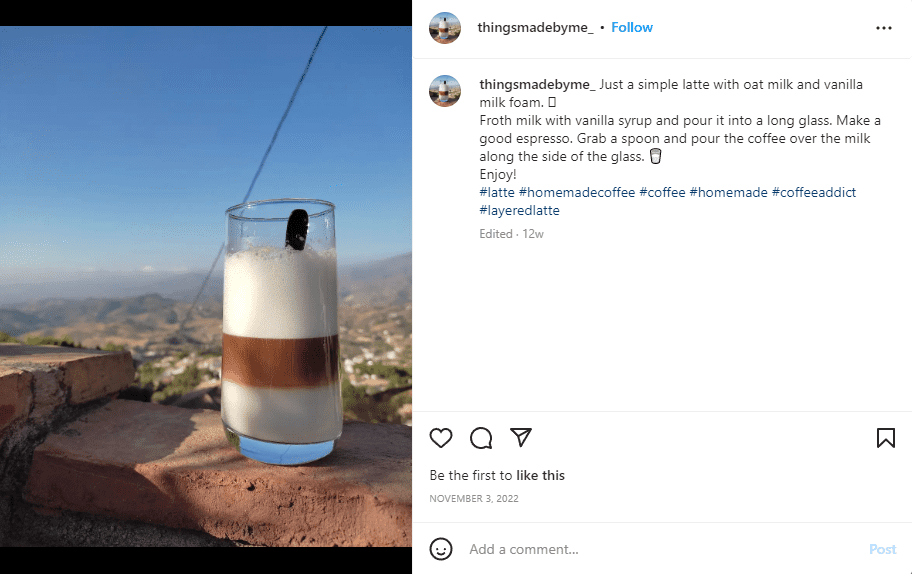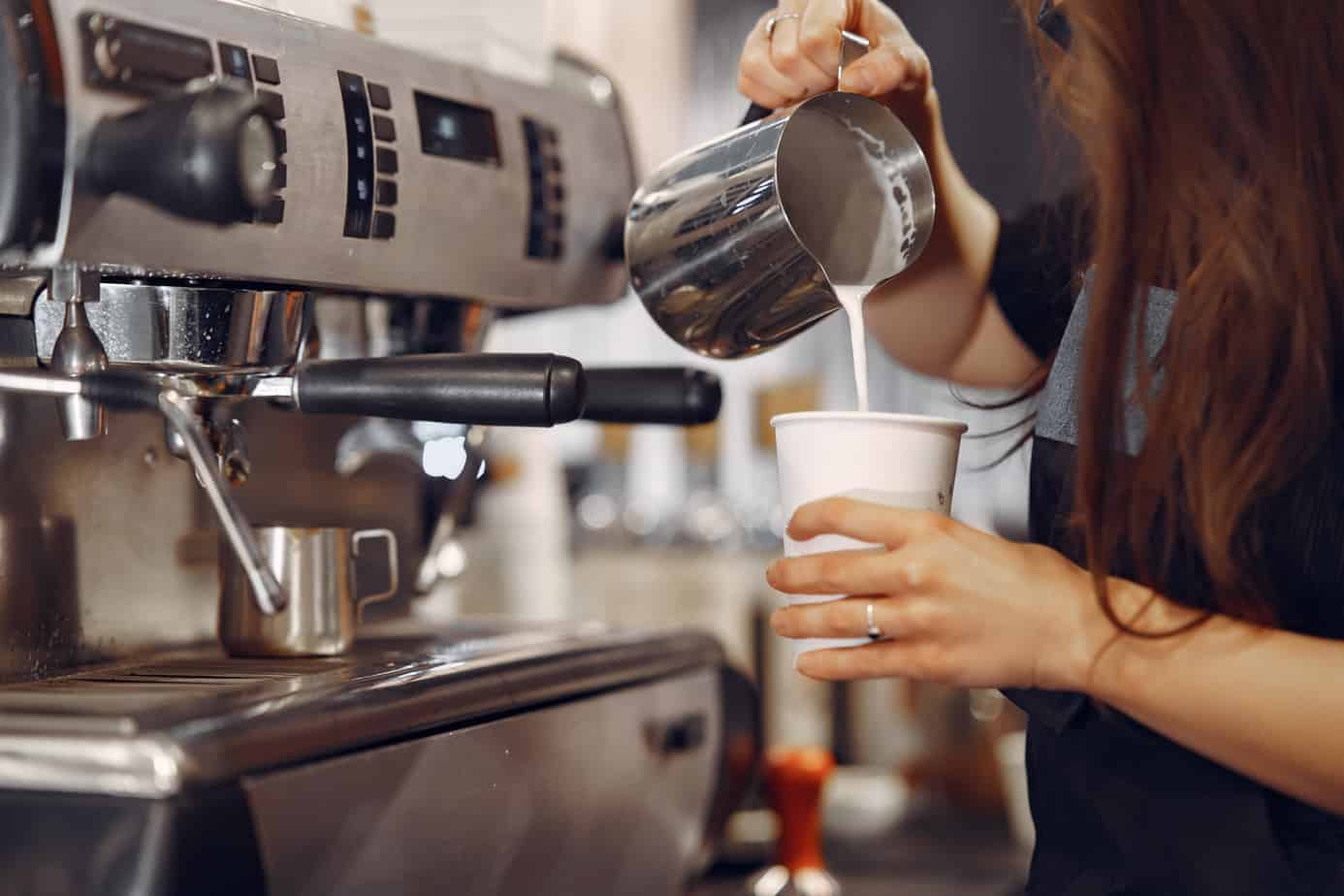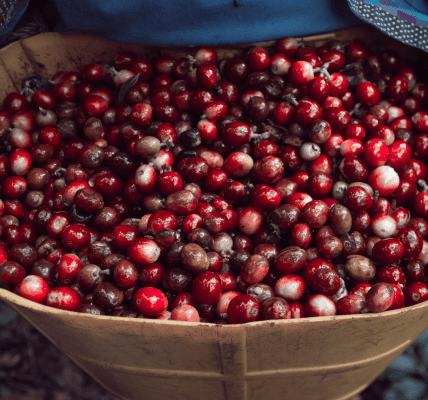
Coffee means something different to everyone. Some think of a roasted, aromatic cuppa in a rich color, while others imagine a frothy, milky mug of summer in their mouth. We usually include a wide range of drinks made from coffee beans under the umbrella term, “coffee,” – including latte. But there are many differences between coffee and latte.
The visible difference between coffee and latte is that latte has milk (and foam) while coffee doesn’t. It creates an obvious distinction in flavor and color. Plus, coffee is brewed from grounds using heat for extraction. But latte contains milk and espresso, a coffee concentrate made using pressure for extraction.
Thus, coffee and latte have some nuanced dissimilarities. They differ in flavor notes, making process, calorie content, versatility, and more. Today, I’m going to try to settle the coffee vs. latte debate for you. So read on!
What is Coffee?
Table of Contents
When we say coffee, we usually refer to all beverages made from coffee bean grounds. But if you want to be specific, coffee is a highly-caffeinated, stimulating drink made by brewing grounds in hot water.
The most popular form of coffee is drip coffee. In this brew, the temperature of the water poured over the grounds plays a key role in the extraction process. Near-boiling water passes through coffee grounds and draws the soluble compounds from them.
So you can understand now that this method is different from other brewing styles. It doesn’t involve steeping the beans in hot water or using pressure for extraction. The result is a slightly acidic, dark beverage.
A lot of people like to add sweeteners, creamers, and other additives to coffee. But honestly, for purists, coffee is all about its richness and darkness, with pronounced flavors without leaving any bitterness in your mouth.
Another method using a similar technique is the pour-over coffee, which is a more artisanal method of brewing. Making coffee at home with coffee powder, i.e., dehydrated brew, is also quite common.
As I said, various types of brews are considered “coffee” – be it French press, pour-over, instant, or anything else. But when we talk about standard coffee, we usually refer to drip coffee. That’s because coffee is easily made at home manually or using a regular coffee machine.
What is Latte?
Caffè latte, or just latte, is a coffee-based drink that tastes creamy and thick. That’s because it is a concoction of concentrated coffee, i.e., espresso and steamed milk. The drink is topped with milk foam to make it even more enjoyable.
Here’s an interesting tidbit for those who don’t speak Italian. If you go to a quaint cafe in Italy and order some nice hot latte, they’ll bring you steamed milk! That’s because the word “latte” translates to milk – while “caffè” translates to coffee.
Leaving aside the story of how I learned to order caffè latte in Italy, here’s something you need to know about the coffee content in latte, i.e., espresso. It is a concentrated form of coffee – with pressure as the key component in its making process.
As hot water is forced through the dark-roast grounds, usually at 9 bars, this pressure helps extract the compounds to give you espresso. To make a latte, you need a shot of this espresso, add 2-4 portions of steamed milk, and top it off with a soft froth layer.
Though latte is ideally sweetener-free, people love to add sugar to it. And they also add other additives, the most popular of them being chocolate. I find latte drinkers experimenting with vanilla syrup, plant-based milk, and other additives, too.
The latest trend is layered latte, served in a clear glass so that you can see the distinct layers of brown and white. I love the look from the side; it’s so Instagrammable! Check out this amazingly beautiful cup of layered latte –

Difference Between Coffee and Latte
Now that you have the basic concept of coffee and latte, let’s find out in detail how they differ from each other.
a) Ingredients
It’s evident from the discussions we have had so far that one of the key points of difference is the ingredients used in coffee and latte.
Coffee is made using two simple ingredients – near-boiling water and coffee grounds. On the other hand, latte contains steamed milk, milk froth, and espresso (made using hot water and coffee grounds.
Milk and sugar may be added to a cup of coffee, along with flavor syrups. But pedantic coffee drinkers who prefer the original taste would recommend against such additional ingredients – and are sticklers for unadulterated black coffee.
Latte has a lot of room for experimentation, and it can only improve with added ingredients. That’s why latte with added sugar syrup, chocolate sauce, vanilla essence, etc., is quite common on coffee shop menus.
b) Equipment
You need a standard coffee maker, i.e., a drip coffee maker, to make coffee. It pours hot water over grounds in the filter, which drips into a carafe with all the coffee goodness. You can also make drip coffee manually in a dripper, like an hourglass-shaped Chemex.
Since latte is made using espresso, you’ll need an espresso machine to make this beverage. Different types of espresso machines offer varying levels of automation and control. But essentially, they’re complex machines to force water through the beans.
A regular coffee maker cannot generate the pressure (usually 9 bars) needed to make espresso. Espresso machines don’t just put hot water on the grounds. They apply pressure using a pump to facilitate the extraction process.
A regular coffee maker maintains a steady and consistent stream, while espresso machines distribute a small amount of water through the grounds. You can make strong coffee using a French press or an AeroPress. But the taste and the body will differ.
c) Making Process
Coffee –
Making coffee is a straightforward process, whether you use a coffee machine or not. To make it in a coffee maker, the following steps are needed –
- Place the filter in the basket and add the grounds to the filter.
- Fill the water reservoir with fresh, cold water.
- Turn on the machine and wait for it to finish brewing your coffee, which should take around 5-10 minutes. The brew will pour into the carafe automatically.
To make coffee without a coffee maker, you need to do the following –
- Begin by heating water to the desired temperature, preferably 195-205°F.
- Put a filter in a drip flask, and add ground coffee.
- Pour a small amount of hot water over the ground coffee to “bloom” it, allowing the grounds to release their compounds. It should take about 30 sec.
- Pour the remaining water over the coffee, saturating all of the coffee. It will take about 2-3 min for all the water to pass through the coffee.
Here’s a video that shows you how to make drip coffee manually.
But how much coffee is required to make drip coffee? Following the SCAA standard, you should use around 3 tsp grounds for a standard 237ml (8oz) cup of coffee.
Latte –
To make latte, you need to start with brewing espresso – and then make a beautiful concoction by adding it to milk. Here’s how it’s done –
- Start by making espresso. For that, fill the water tank of the espresso machine with water and turn it on. Allow it to heat up for a few minutes before brewing.
- Place ground coffee beans in the portafilter, tamping them properly to ensure an even extraction.
- Insert the portafilter into the machine and place a cup or mug under it before pressing the brew button. The process should take about 20-30 sec.
- While the espresso is brewing, heat the milk. You can use any type of milk that you prefer.
- Use a milk frother to aerate the steamed milk and create a creamy foam. You can also use a whisk if you don’t have a frother.
- In a mug, pour one portion of the espresso,e.g., 2 shots or 2 oz.
- Then, add 4-8 oz of the foamed milk, depending on how strong or milk you want the drink to be.
But if you want to make some layered latte, add the milk first and spoon in the froth on the top. Then, gently pour the espresso from the top. Here’s a video to help you.
The ideal coffee grounds to water ratio for espresso is 1:2. That means you should use almost 0.5 oz of coffee grounds, i.e., nearly 1 tbsp, for 1 oz of water in a standard shot of espresso.
d) Flavor, Look, and Feel
Coffee has a rich and full-bodied flavor, with a touch of acidity and bitterness – and a rich aroma. It may also have mild citrus or floral hints with stronger notes of nuttiness.
The flavors are nuanced and depend on the beans used, roast level, and coarseness. And it can be an exciting adventure, discovering fine tastes that suit your taste.
Coffee also has a dark brown color – unless you add creamers and syrups to it. It has a thin, watery consistency and a smooth texture.
On the other hand, latte has a mild and milky taste, with a natural sweetness due to the milk content. Its creaminess helps cover up any bitterness or acidic notes.
It has a thicker, more viscous texture, with a luscious frothiness and a light brown color. Overall, it is smooth and velvety – ideal for those looking for a dairy-centric beverage.
The complex flavor notes and hints of aromas are not distinct in latte, though – nor does it taste bitter or acidic. It’s nutty and caramel-like without the boldness of black coffee.
e) Caffeine Content
While the serving size of coffee can be between 1 oz and 24 oz, a standard cup of coffee of 8 oz contains 70-140 mg of caffeine. So the average boils down to about 95 mg per cup.
On the other hand, a 1oz shot of espresso contains about 63 mg of caffeine. So a cup of latte, with 2 shots of espresso, also has 126 mg of caffeine.
f) Calories
Since coffee contains only water apart from coffee, it contains less than 5 calories. On the other hand, a cup of latte contains about 100-120 calories from milk content alone if you use whole milk. It contains another 6 calories from 2 shots of espresso.
Thus, the calorie content of latte is much higher than regular black coffee, most of which comes from milk. It can be adjusted by using low-fat creamers, though. In any case, the calorie content is much higher due to the unavoidable milk content.
You must remember, however, that the calorie content in both can go beyond your control if you choose to add extra ingredients. While milk can evidently contribute to the calories of coffee, sugar or chocolate syrup in latte can push the calories higher.
Similarities Between Coffee and Latte
Although coffee and latte are quite different, there are also a few elementary similarities. For starters, they are both coffee-based beverages – even though the preparation and extraction processes are different.
In addition, both allow some level of variation by adding syrups, flavors, and more. Of course, that would mean you have to be comfortable stepping out of the “traditional” zone and experimenting a little.
Another fun similarity is that both can be enjoyed as hot or iced brews. This is another customization that deviates from the original making processes, but iced coffee and iced latte are both delicious summertime beverages.
Final Words
Now you know all about the differences between coffee and latte. Now, the question is, which one is the right drink for you? It primarily depends on your taste – and mood.
You may prefer every sip of your java to give you complex, pronounced flavors of pure coffee. In that case, coffee is the right drink for you. But if you want to avoid the bitterness and acidity – and want a comforting drink with sweeter notes, go for latte!



